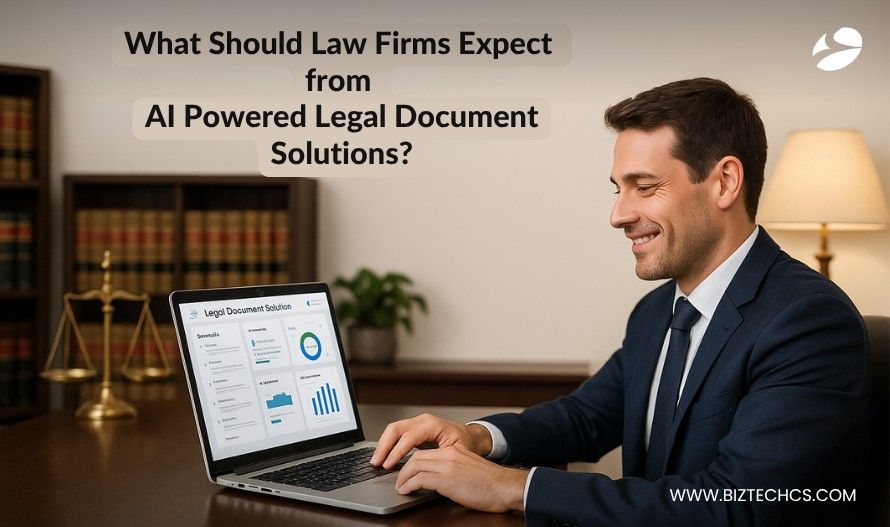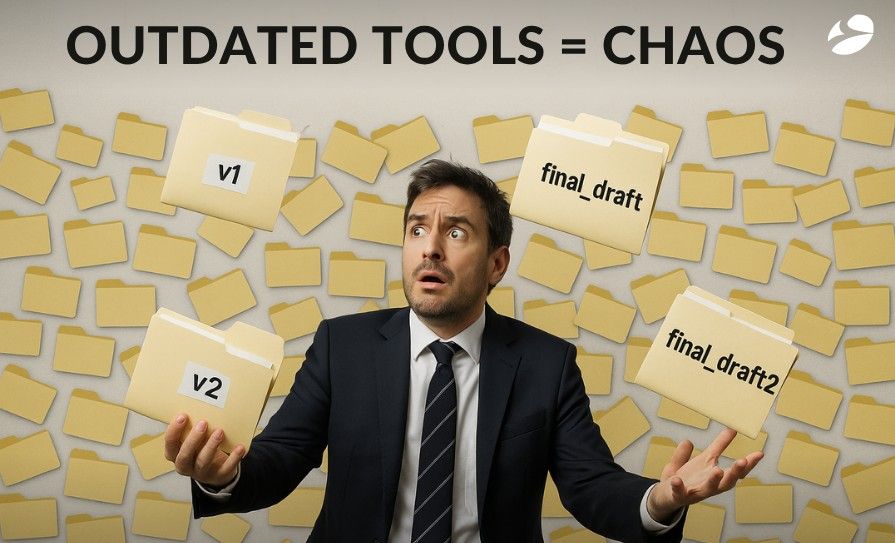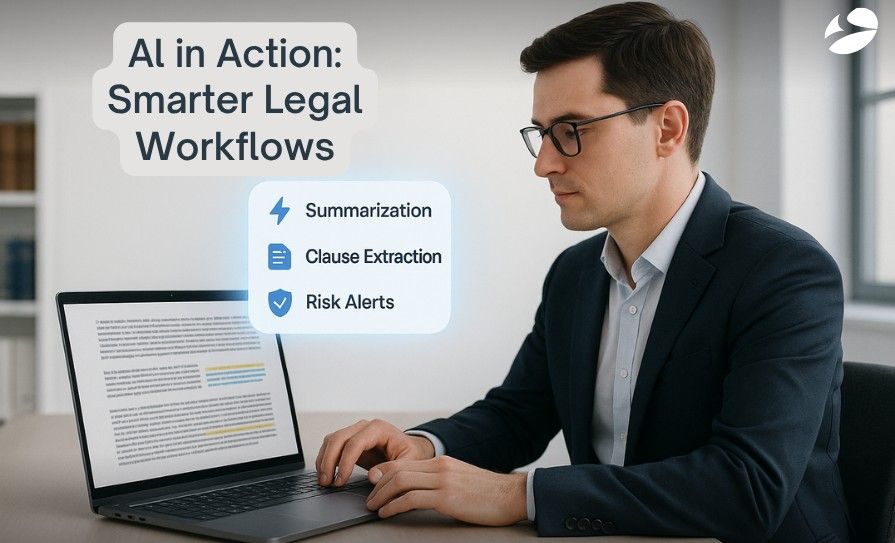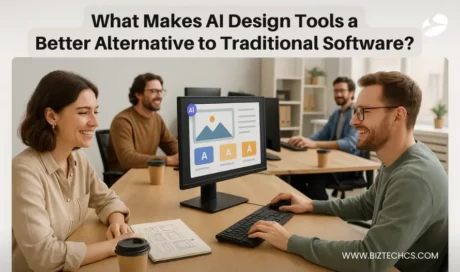What Should Law Firms Expect from AI-Powered Legal Document Solutions?
10 Oct, 2025
5 min read
10 Oct, 2025
5 min read

Legal professionals often assume litigator roles that perhaps should not be intermingled with those of wrestlers in the Excel spreadsheet arena. This arena feels as ancient as geology.
The reality is harsh: lawyers now work an average of 48 hours per week, yet only 36 of those are billable — meaning a full quarter of their time is lost to non-billable tasks (Bloomberg Law, 2024). . That doesn’t just cut into revenue; it’s like hiring a Michelin-star chef only to have them peeling potatoes all day.
The erosion is real: less client advocacy, more compliance risk management, and the constant fear of stepping into a landmine of GDPR or eDiscovery obligations. Legacy systems make matters even worse—slower in function than dial-up Internet and about as useful in a courtroom as a chocolate teapot.
Meanwhile, client expectations continue to rise, regulators remain vigilant in their scrutiny, and digital transformation persists, knocking on the door and refusing to leave. Legal document management software is no longer a nice-to-have; it is an oxygen mask that every firm should immediately grab before the turbulence takes a nosedive.
A common concern many partners raise is: “Will adopting AI-powered legal document solutions disrupt ongoing client work?” The reality is, these systems are designed for phased adoption. They integrate with existing workflows so seamlessly that most firms see improvements in retrieval and compliance within weeks—without disrupting billable client work.
With AI-powered legal tech and cloud-based legal solutions, firms can finally move beyond the outdated role of overpaid data-entry clerks and return to practicing actual law. Legal workflow automation, combined with tools such as smart search for legal documents, enables teams to streamline processes, mitigate risk, and enhance efficiency.
While lawyers are stuck using document management tools that seem to belong in a museum rather than in an attorney’s office, we are here to change that culture. SharePoint, OCR, and system folder-based structures might have once dazzled on a PowerPoint slide, but in reality, they create chaos with version control. People practically need a full-time master’s degree just to play endless games of ‘guess the latest draft.’
Working hours slip away while lawyers waste valuable time searching through folders that function as nothing more than digital junk drawers—a black hole for files. Collaboration is another casualty, as these archaic systems treat teamwork like a crime scene: restricted, clunky, and frustrating.
The absence of audit trails adds yet another headache, leaving firms vulnerable to serious compliance risks that can quickly escalate into costly disasters. Legal document management software shouldn’t feel like a punishment—that’s why BiztechCS takes a different approach.
Through ai/ml development services tagging powered by metadata visibility and AI-powered legal tech, retrieval becomes instant, precise, and almost effortless in its simplicity.

This naturally prompts a leadership-level question: “How does this protect us from the compliance risks that keep partners up at night?” The answer lies in real-time audit trails—every action, from uploads to edits, is tracked and visible. That transparency reduces regulatory exposure and gives firms confidence when auditors or clients ask tough questions.
By modernizing fragmented tools into unified cloud-based legal solutions, BiztechCS ensures that legal workflow automation, smart search for legal documents, and GDPR or eDiscovery readiness are not distant goals but realities from day one.
AI Expert Tip: Never overlook compliance-first design. Embedding real-time audit trails and role-based access into your ai/ml development services platform from day one ensures you don’t just meet GDPR or eDiscovery obligations—you stay ahead of them. This turns compliance from a reactive headache into a proactive advantage.
A modern document platform should never resemble a glorified filing cabinet with a search bar tacked on. It must be secure, cloud-native, and infused with intelligence that truly understands legal workflows—far beyond a pretend “smart” bot.
Today, legal document management software should handle contracts, motions, and pleadings with surgical precision, not in the chaotic fashion of a blindfolded intern juggling papers. BiztechCS builds platforms that keep legal use cases at the very core, ensuring law firms never lose sleep again over soap-opera-level version control disasters.
The scalable SaaS model guarantees it works equally well for boutique practices as it does for enormous multi-office firms that seem to generate documents as quickly as rabbits multiply. Collaboration and compliance should come baked into every workflow; otherwise, watching auditors play hide-and-seek with critical files might become the only source of entertainment.
At this stage, decision-makers often ask: “But will this work equally well for boutique firms with ten lawyers and multi-office firms with thousands?” Absolutely. Thanks to the scalable SaaS model, small practices enjoy the same precision and security as global firms. And as the firm grows, the platform scales seamlessly—no painful migrations or reinvestments needed.
With AI-powered legal tech and cloud-based legal solutions, paired with legal workflow automation and smart search for legal documents, retrieval becomes so fast and precise that it almost feels illegal.
Are you ready to replace outdated workflows with collaboration tools that actually empower your legal team?
When law firms are overwhelmed by disorganized files, security concerns, and inefficient workflows, the best approach is to start small but strategic. An MVP can establish a solid foundation for growth. Rather than building another clunky system that feels like a glorified file cabinet, the goal is to create a secure, intelligent, and scalable platform from day one.
The starting point is always security and compliance. Sensitive contracts, pleadings, and NDAs cannot live on unsecured drives—it’s an open invitation to lawsuits and regulatory nightmares. That’s why we begin with secure document uploading and GDPR- or SOC2-compliant cloud storage.
From there, ai application development services takes over the heavy lifting: automatically classifying and tagging documents faster than any junior associate with a highlighter. Version control and audit trails come next, eliminating the “who last touched this file?” drama that consumes so many hours.
Role-based access ensures that partners, associates, paralegals, and clients see only what they’re supposed to see, protecting confidentiality while streamlining collaboration.
To top it off, smart NLP-powered search transforms the process of finding documents. No more digital dumpster diving—retrieval becomes instant, precise, and effortless.
Once the foundation is secure, the next phase is about freeing lawyers from repetitive work and putting AI to practical use. Auto-summarization and clause extraction tools digest lengthy contracts into key insights—so legal teams spend less time reading and more time strategizing.
Redlining with tracked changes simplifies collaboration, eliminating the need for endless email threads that resemble chaotic ping-pong matches.
It’s natural to wonder: “How will busy attorneys adapt to AI tools without adding another layer of training?” The design solves that. Features like auto-summarization and clause extraction are embedded directly into the tools lawyers already use daily, so they don’t feel like new systems—just smarter versions of familiar workflows.
Seamless integrations with DMs, case law databases, and calendars reduce tool overload, making legal work far less fragmented. To safeguard compliance, we introduce dashboards that proactively flag GDPR, HIPAA, or eDiscovery risks long before regulators can.
Every enhancement is seamlessly integrated into daily workflows, so automation feels natural and AI becomes a true productivity partner—not a gimmick.

The final phase involves ensuring the platform evolves in tandem with the firm. E-signature workflows accelerate contract execution, eliminating snail-mail delays. Task automation takes over repetitive admin work, giving associates and paralegals more time for high-value tasks.
With predictive analytics, firms gain the ability to assess contract risks and litigation readiness before issues escalate—offering foresight that feels like a competitive edge. Meanwhile, our legal ai application development services models are continually refined for accuracy, ensuring they improve over time rather than becoming outdated.
At this stage, the platform is no longer just document management software—it’s the digital backbone of a law firm. Scalable, secure, and intelligent, it supports growth, compliance, and client trust at every step.
Could your firm benefit from a digital backbone designed for resilience and growth? The opportunity to future-proof operations is here.
The days of building a LegalTech platform on duct tape and wishful thinking are long gone. A modern solution requires a robust architecture that can scale, not collapse like a poorly built house of cards.
A serverless backend on AWS or GCP provides speed and compliance while eliminating the nightmare of server babysitting at 3 A.M. Secure storage using S3-compatible systems protects sensitive case files, ensuring they stay safe instead of disappearing like socks in a laundromat.
With integrations like Azure OpenAI or Anthropic Claude, AI-powered legal tech can now classify documents and extract insights at a level junior associates can only dream of. Using Pinecone for metadata tagging delivers instant, reliable retrieval—saving lawyers from folder mazes that feel more like digital haunted houses.
Authentication and role-based access managed by Auth0 ensure that partners, associates, and clients only see what they are meant to see, preventing accidental access to files that could trigger a scandal.
AI Expert Tip: When scaling globally, make sure your AI-powered system supports flexible data residency. By architecting with multi-tenant and private cloud options, firms can meet EU, US, or APAC compliance requirements without compromising performance or user experience.
For firms handling cross-border matters, another question arises: “What about data residency concerns if our cases span different jurisdictions?” The platform addresses this by offering both multi-tenant and private cloud deployments. Firms can dictate exactly where data resides—EU, US, or other regions—ensuring compliance with local data laws while maintaining global access.
PDF.js previews allow smooth, browser-based access to documents without clunky downloads. BiztechCS designs serverless architectures that bring all these elements together into unified cloud-based legal solutions.
By embedding legal workflow automation and smart search for legal documents, while supporting multi-tenant or private cloud deployments, firms can achieve scale, security, and efficiency without compromise. At this level, legal document management software becomes a foundation for both resilience and growth.
The wheel doesn’t need to be reinvented for law firms, nor should an AI Frankenstein be built—that’s where BiztechCS comes in. At this stage, there must be a clearly defined MVP scope to prevent the project from spiraling into yet another never-ending committee meeting where nothing truly gets done.
BiztechCS can roll out secure and scalable AI-powered legal tech in just 60 working days—faster than most firms take to put together a single strategy offsite. Cost efficiency and compliance are built into the process. This ensures firms avoid the all-too-common horror story of investing in expensive tools that end up gathering dust like an unused gym membership.
At the core is legal document management software. Strengthened with cloud-based solutions, automation, and intelligent search, it ensures adoption is seamless. The result is immediate value—measured in billable hours gained, not lost.
The result is simple: law firms get to focus on practicing law, while BiztechCS takes care of the heavy lifting—without the bad attitude.
The companies that prosper tomorrow will treat agility, compliance, and client trust as non-negotiables rather than optional features. Competitive advantage no longer comes from billing more hours; it comes from adopting AI-powered legal tech before others do and leaving the competition struggling to stay afloat.
BiztechCS modernizes fragmented tools into unified, cloud-based legal solutions that actually solve problems, rather than just claiming to. With metadata-based ai/ml development services tagging, instant retrieval is no longer a wish, but a reality, while GDPR and eDiscovery readiness are built in from the start.
Legal document management software is more than a filing system; it is the nervous system of a law firm—wiring contracts, motions, and pleadings together with zero tolerance for chaos. For firms, the decision comes down to this: adopt legal workflow automation, smart search, and scalable SaaS to thrive. Or stay stuck in outdated systems and watch competitors move ahead.
Ready to see what AI-powered legal document management could do for your firm’s efficiency and compliance? The future of law is here—don’t let competitors get there first.

Artificial Intelligence (AI)
33
By Afzal Qureshi
25 Nov, 2025

Artificial Intelligence (AI)
44
By Afzal Qureshi
24 Nov, 2025

Artificial Intelligence (AI)
145
By Afzal Qureshi
20 Nov, 2025